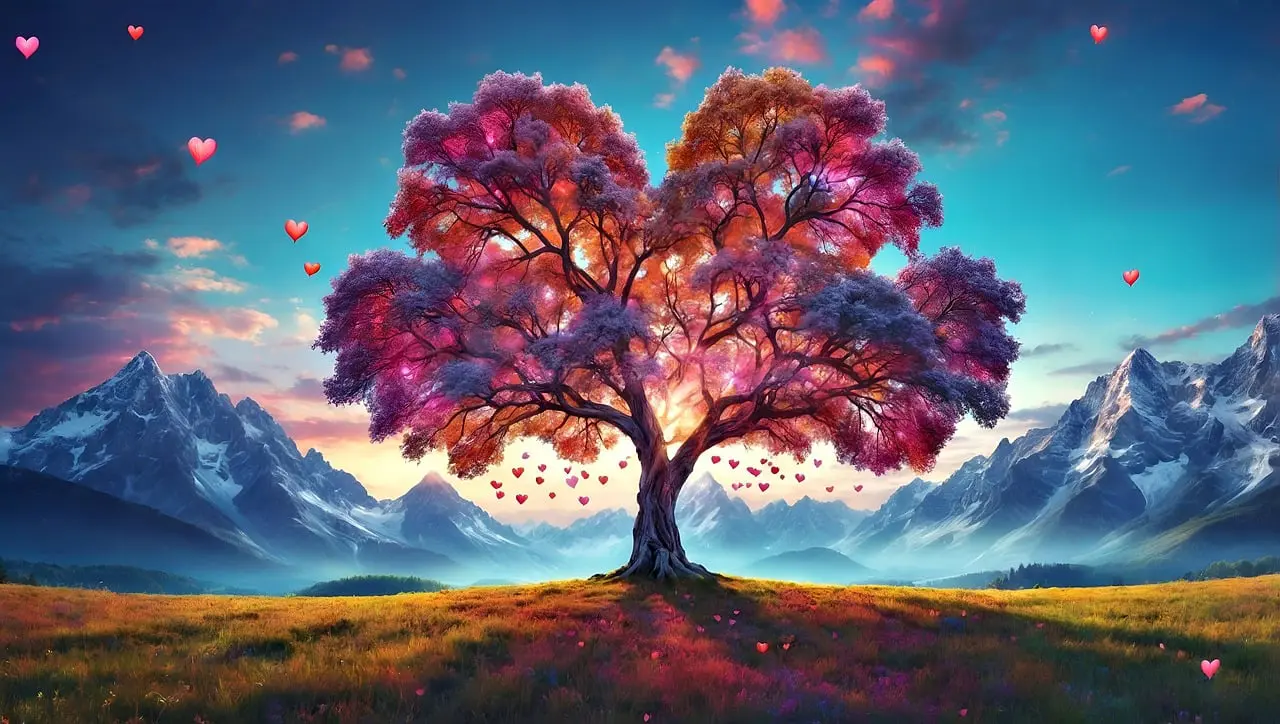Exploring Varanasi: The Spiritual Heart of India

Looking for more amazing products? Check out our online store and explore our collection here! Happy shopping!
Before diving in, please note: This post is for informational purposes only. If you’d like to know more about how we approach topics, feel free to check out our friendly Disclaimer Page.
Hey there, amazing readers! 
We’re committed to delivering quality posts, and your support (even just sticking around despite the ads) means everything to us. So, bear with us, and thanks for helping us keep the good vibes rolling. Now, on to the fun stuff!
TRANSLATE BUTTON AT THE END OF THE ARTICLE
Varanasi, often referred to as Kashi, is not just a city; it’s a spiritual experience, a journey through time and space that transcends the ordinary.
This ancient city, nestled on the banks of the holy Ganges River, holds a profound spiritual significance for millions of people around the world.
In this article, we will delve deep into the spiritual meaning of Varanasi and why it is considered the spiritual heart of India.
A City of Myths and Legends
Varanasi’s history is shrouded in myths and legends.
It is believed to be one of the oldest continuously inhabited cities in the world, with a history that spans over 3,000 years.
According to Hindu mythology, Lord Shiva, the god of destruction, established Varanasi.
The city is often referred to as the “City of Shiva,” and it is believed that visiting Varanasi and taking a dip in the sacred Ganges River can wash away one’s sins and grant them moksha, or liberation from the cycle of birth and death.
The spiritual aura of Varanasi is palpable as soon as you set foot in the city.
The ancient temples, ghats, and narrow winding lanes all resonate with an otherworldly energy that draws pilgrims and seekers from all corners of the globe.
Varanasi’s connection with the divine is not limited to Hinduism alone.
It’s also revered in Buddhism.
Siddhartha Gautama, who later became Buddha, gave his first sermon in Sarnath, just a few miles from Varanasi.
This sermon, known as the Dhammacakkappavattana Sutta, marked the beginning of Buddhism.
The Deer Park in Sarnath is a significant pilgrimage site for Buddhists from around the world.
The Ghats: Where Life Meets Divinity
Varanasi is famous for its numerous ghats, the steps leading down to the Ganges River.
These ghats are not just a physical presence but a spiritual phenomenon.
Each ghat has its unique significance, and together, they form the heart of Varanasi’s spiritual life.
Assi Ghat: At the southernmost end of the city, Assi Ghat is where pilgrims start their journey to cleanse their souls.
It’s believed that Lord Shiva once wandered here.
Dashashwamedh Ghat: This is one of the most famous ghats, where the grand Ganga Aarti takes place every evening.
It’s a spectacle that showcases the city’s deep devotion.
Manikarnika Ghat: It is one of the most sacred ghats as it is associated with the cremation of the deceased.
It symbolizes the cycle of life, death, and rebirth.
Harishchandra Ghat: Named after the legendary King Harishchandra, known for his unwavering truthfulness, this ghat is dedicated to performing funeral rites with the utmost sincerity.
Panchganga Ghat: This ghat is believed to be the confluence of five sacred rivers.
A dip in these waters is said to wash away one’s sins.
Kedar Ghat: This ghat is dedicated to Lord Shiva and is believed to have a Lingam, a symbolic representation of the divine, installed by Lord Shiva himself.
Munshi Ghat: Known for its serene atmosphere, Munshi Ghat is an excellent place for meditation and introspection.
Raj Ghat: This ghat is dedicated to the memory of Jawaharlal Nehru, India’s first Prime Minister.
It’s a place of political and historical significance.
Chet Singh Ghat: This ghat is associated with a historical event when Maharaja Chet Singh defended Varanasi against the British in 1781.
Kedar Ghat: This ghat is dedicated to Lord Shiva and is believed to have a Lingam, a symbolic representation of the divine, installed by Lord Shiva himself.
The Ganges: A River of Purification
The Ganges River is at the heart of Varanasi’s spirituality.
The belief that taking a dip in the Ganges can cleanse one’s sins and lead to salvation is deeply ingrained in Hindu culture.
The river is considered the embodiment of the goddess Ganga, and its waters are believed to have the power to purify the soul.
However, it’s not just about the physical act of bathing.
It’s the deep spiritual connection that devotees have with the Ganges that makes it a central aspect of Varanasi’s spiritual significance.
The daily rituals, the floating lamps, and the mesmerizing Aarti ceremonies are all expressions of this profound relationship.
It’s worth noting that while the spiritual significance of the Ganges remains undeniably powerful, the river faces environmental challenges.
Pollution, sewage, and industrial waste have taken a toll on the sacred waters.
Efforts are underway to clean and protect the river, recognizing its spiritual and ecological importance.
Temples and Shrines: Abodes of the Divine
Varanasi is adorned with countless temples and shrines, each with its own stories and significance.
Some of the must-visit temples include:
Kashi Vishwanath Temple: This temple is dedicated to Lord Shiva and is one of the holiest temples in Hinduism.
It’s said that a visit to Varanasi is incomplete without offering prayers here.
Sankat Mochan Hanuman Temple: Dedicated to Lord Hanuman, this temple is believed to fulfill the wishes of its devotees.
Durga Temple: This temple is dedicated to Goddess Durga and is known for its unique red color and stunning architecture.
Kaal Bhairav Temple: Dedicated to Kaal Bhairav, an incarnation of Lord Shiva, this temple is associated with the concept of time and the inevitability of death.
Tulsi Manas Temple: This temple is dedicated to Lord Rama and is known for its beautiful marble carvings depicting the Ramayana, an ancient Indian epic.
New Vishwanath Temple: Also known as Birla Temple, this modern temple is made of white marble and is a masterpiece of architectural beauty.
Annapurna Temple: Dedicated to Goddess Annapurna, the provider of food, this temple is a symbol of nourishment and sustenance.
The Philosophy of Varanasi
Varanasi is not just a place of rituals and ceremonies; it’s a city that teaches profound philosophical lessons.
It reminds us of the impermanence of life and the inevitability of death.
The juxtaposition of life and death along the ghats is a constant reminder of the cyclical nature of existence.
The city encourages self-reflection, meditation, and spiritual growth.
It’s a place where people come to seek answers to life’s most profound questions.
The spiritual atmosphere here is conducive to inner transformation and self-discovery.
Varanasi in Literature and Arts
The spiritual essence of Varanasi has inspired countless poets, writers, artists, and musicians over the centuries.
It has found its way into numerous literary works, paintings, and musical compositions.
From the verses of Kabir and Tulsidas to the poetry of Tagore, Varanasi’s influence on the creative world is undeniable.
The city’s labyrinthine alleys, its ghats, and its people have been a wellspring of inspiration for artists and writers.
The spiritual mystique and
the interplay of life and death have been explored in literature and depicted on canvas.
Varanasi has been a muse for photographers capturing its timeless beauty.
Challenges and Preservation
While Varanasi’s spiritual significance remains intact, the city faces numerous challenges.
Pollution of the Ganges, overcrowding, and inadequate infrastructure are some of the issues that need urgent attention.
Efforts are being made to address these concerns and preserve the city’s unique spiritual heritage for future generations.
Cleaning the Ganges is a complex and ongoing task.
Various governmental and non-governmental organizations are working tirelessly to reduce pollution and promote sustainable practices.
The Swachh Bharat Abhiyan, or Clean India Campaign, launched by the Indian government, has made significant strides in improving sanitation and cleanliness in Varanasi and other cities.
Preserving the architectural heritage of the city is equally vital.
Many old buildings and temples are being carefully restored to maintain their historical and cultural significance.
These restoration efforts aim to ensure that the city’s unique charm is preserved for generations to come.
Conclusion
Varanasi, the spiritual heart of India, is a city that transcends time and space.
It’s a place where myths, legends, and spirituality come together to create a profound experience.
The ghats, the Ganges, the temples, and the city’s philosophy all contribute to its spiritual significance.
Varanasi is not just a city; it’s a spiritual journey that can transform the soul.
FAQs about Varanasi
1.
Why is Varanasi called the spiritual heart of India?
Varanasi is considered the spiritual heart of India due to its deep-rooted spiritual history, its association with Lord Shiva, and its significance in Hindu mythology.
It’s a place where people come to seek spiritual enlightenment and liberation.
2.
What is the best time to visit Varanasi for a spiritual experience?
The best time to visit Varanasi for a spiritual experience is during the winter months, from October to March.
The weather is pleasant, and the Ganges is at its cleanest during this period.
3.
Can non-Hindus visit Varanasi’s temples and participate in spiritual activities?
Yes, non-Hindus are welcome to visit Varanasi’s temples and witness the spiritual rituals.
However, it’s essential to be respectful of the traditions and practices.
4.
Are there any specific rituals or ceremonies to participate in as a visitor to Varanasi?
You can witness the Ganga Aarti at Dashashwamedh Ghat, take a boat ride on the Ganges, and explore the city’s temples.
While you can participate in some rituals, it’s essential to understand their significance and follow the local customs.
5.
How can one contribute to the preservation of Varanasi’s spiritual heritage?
Supporting organizations working on Ganges conservation, promoting responsible tourism, and respecting the city’s culture and environment are ways to contribute to the preservation of Varanasi’s spiritual heritage.
6.
Is it safe for solo travelers to visit Varanasi?
Varanasi is generally safe for solo travelers.
However, like any other destination, it’s essential to exercise basic precautions, such as safeguarding your belongings and being aware of your surroundings.
7.
What is the significance of the Ganga Aarti at Varanasi?
The Ganga Aarti is a daily ritual that takes place at Dashashwamedh Ghat.
It’s a mesmerizing ceremony where priests offer prayers to the Ganges, accompanied by the lighting of lamps and the sound of chanting.
This ritual is a symbol of devotion and reverence to the sacred river.

The Enlightenment Journey is a remarkable collection of writings authored by a distinguished group of experts in the fields of spirituality, new age, and esoteric knowledge.
This anthology features a diverse assembly of well-experienced authors who bring their profound insights and credible perspectives to the forefront.
Each contributor possesses a wealth of knowledge and wisdom, making them authorities in their respective domains.
Together, they offer readers a transformative journey into the realms of spiritual growth, self-discovery, and esoteric enlightenment.
The Enlightenment Journey is a testament to the collective expertise of these luminaries, providing readers with a rich tapestry of ideas and information to illuminate their spiritual path.
Our Diverse Expertise
While our primary focus is on spirituality and esotericism, we are equally passionate about exploring a wide range of other topics and niches 

To ensure we provide the most accurate and valuable insights, we collaborate with trusted experts in their respective domains 
Our blog originally focused on spirituality and metaphysics, but we’ve since expanded to cover a wide range of niches. Don’t worry—we continue to publish a lot of articles on spirituality! Frequently visit our blog to explore our diverse content and stay tuned for more insightful reads.
Hey there, amazing reader! 
Check out our store here and take a peek at some of our featured products below! Thanks for being awesome!











